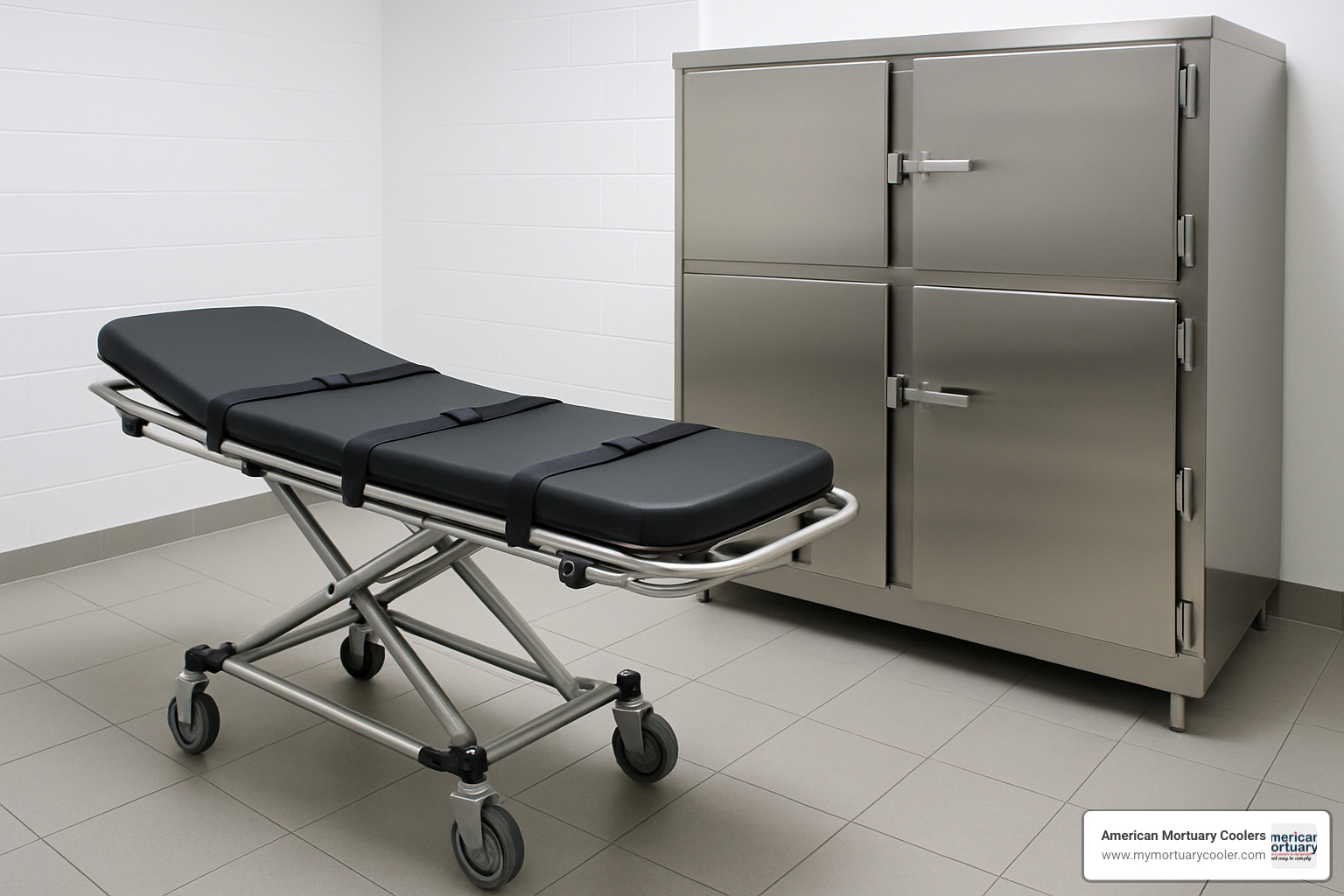The Evolution of Patient Transport: Understanding Medical Stretchers
Medical stretchers are essential devices designed for safely transporting patients in healthcare settings. They come in various types to meet different needs.
| Common Types of Medical Stretchers | Primary Use |
|---|---|
| Transport Stretchers | Intra-hospital patient movement |
| Emergency/Ambulance Stretchers | Emergency medical services transport |
| Specialized Stretchers | Bariatric, pediatric, or MRI-compatible care |
| Surgical Stretchers | Operating room procedures |
| Stair Stretchers | Navigation through stairwells during evacuations |
Medical stretchers serve as the backbone of patient transport systems in hospitals, ambulances, and emergency response scenarios. These specialized devices enable healthcare professionals to safely move patients while maintaining proper body positioning and minimizing the risk of further injury. Modern stretchers have evolved far beyond the simple canvas-on-poles design of early models, now featuring adjustable heights, hydraulic lifting mechanisms, and specialized adaptations for various clinical environments.
Whether responding to a multi-vehicle accident, transferring patients between hospital departments, or evacuating during disasters, the right stretcher can make the difference between efficient care delivery and compromised patient outcomes. With weight capacities ranging from standard 350-pound models to specialized bariatric units supporting up to 1,600 pounds, today's medical stretchers are engineered to meet diverse patient populations' needs.
I'm Mortuary Cooler, a national supplier of medical transport equipment with extensive experience providing high-quality medical stretchers to healthcare facilities and funeral homes across the United States. My team specializes in helping professionals select appropriate transport solutions that combine durability with practical design features.
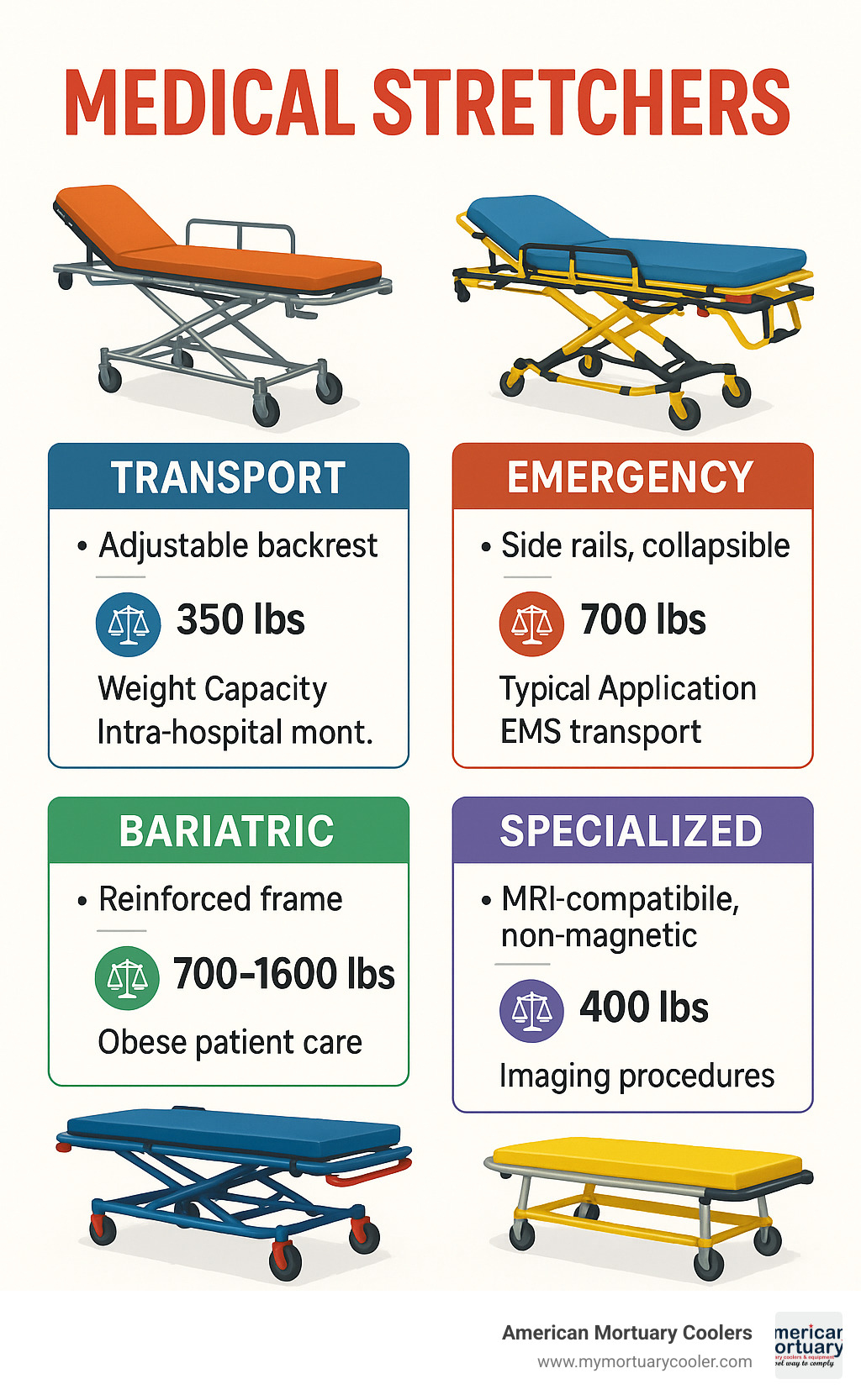
Know your MEDICAL STRETCHERS terms:
What Are MEDICAL STRETCHERS and Why They Matter
When you think about life-saving medical equipment, medical stretchers might not be the first things that come to mind. Yet these specialized platforms are absolutely essential in healthcare settings worldwide. A medical stretcher is basically a patient's mobile bed—typically featuring wheels and protective side rails—designed to transport people who are injured, ill, or simply unable to walk on their own.
The humble stretcher serves a critical purpose: moving patients safely and comfortably between locations. Whether it's from a car accident to an ambulance, from the ER to radiology, or between hospital departments, these devices ensure patients can be transported while maintaining proper positioning and dignity.
"A good stretcher doesn't just carry a patient—it protects both the patient and the team moving them," as one experienced EMS manager told me recently. This simple statement captures why medical stretchers matter so much in healthcare environments.
The evolution of stretchers tells an interesting story of medical innovation. What began centuries ago as basic canvas sheets suspended between wooden poles has transformed into sophisticated transport systems. Today's models feature hydraulic lifting mechanisms, specialized mattresses to prevent pressure sores, radiolucent materials for X-rays without patient transfers, and even battery-powered loading systems that protect healthcare workers from back injuries.
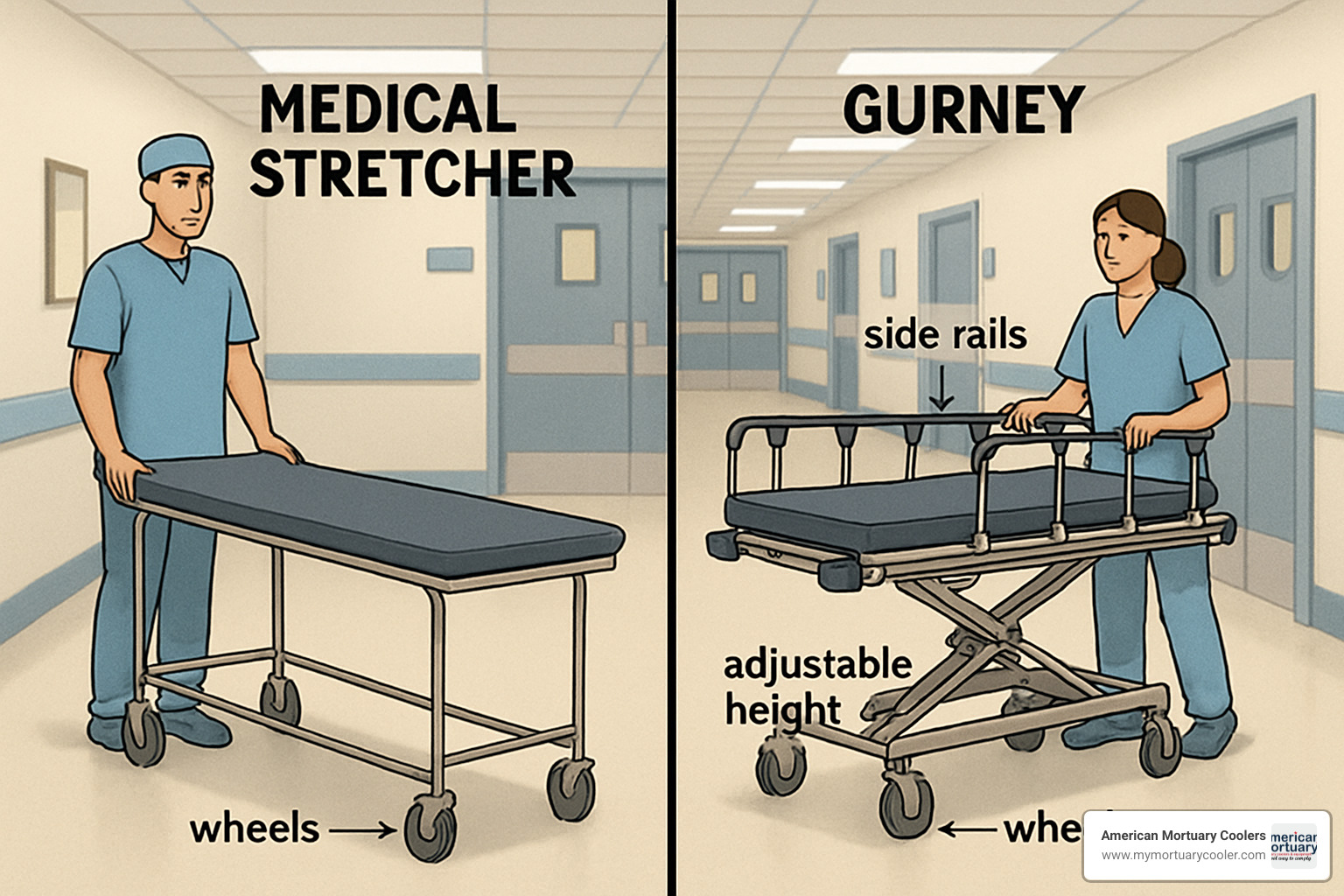
Understanding MEDICAL STRETCHERS vs Gurneys vs Transport Chairs
The terminology around patient transport equipment can be confusing, so let's clear things up. People often use these terms interchangeably, but there are meaningful differences:
| Feature | Stretcher | Gurney | Transport Chair |
|---|---|---|---|
| Main Form | Flat bed | Wheeled stretcher w/ collapsible legs | Upright seat w/ wheels |
| Adjustable Height | Yes (most) | Yes (for loading/unloading) | Limited (some models) |
| Patient Position | Supine (lying down) | Supine | Seated |
| Typical Use | Hospital, EMS, mortuary | Ambulance, ER | Intra-hospital, short trips |
| Collapsible for Storage | Sometimes | Yes | Often |
When someone says "stretcher," they're using a broad term that covers various patient-transport platforms. These might be fixed, wheeled, or folding depending on their specific application. A gurney is technically a narrow, wheeled stretcher with legs that collapse for easy loading into ambulances. Meanwhile, a transport chair resembles a wheelchair and is designed for patients who can safely remain in a seated position during movement.
Typical Use Cases for MEDICAL STRETCHERS
You'll find medical stretchers in virtually every healthcare setting where patient movement occurs:
In Emergency Rooms, stretchers are the workhorses that transfer patients from ambulance arrivals straight to trauma bays or treatment areas. The seconds saved with efficient stretcher designs can literally save lives in critical situations.
Ambulance crews rely heavily on specialized stretchers designed to lock securely into vehicle mounts while providing comfortable transport from accident scenes or homes to medical facilities.
Imaging departments often use specialized radiolucent stretchers that allow X-rays and scans to be performed without moving the patient to another surface—particularly valuable for trauma patients with potential spinal injuries.
During mass-casualty events like natural disasters, lightweight folding pole stretchers can be rapidly deployed to move multiple victims during triage operations.
In long-term care settings, higher-end transport stretchers with pressure-relieving mattresses provide essential comfort for residents who need to be moved between care areas while remaining supine.
Medical stretchers may seem like simple tools, but they represent the intersection of engineering, medical science, and compassionate care—making them truly indispensable in modern healthcare.
Main Types of Medical Stretchers You'll Encounter
When it comes to patient transport, there's no one-size-fits-all solution. The healthcare world relies on a variety of MEDICAL STRETCHERS designed for specific situations and patient needs. Let's explore the main types you're likely to see in action.
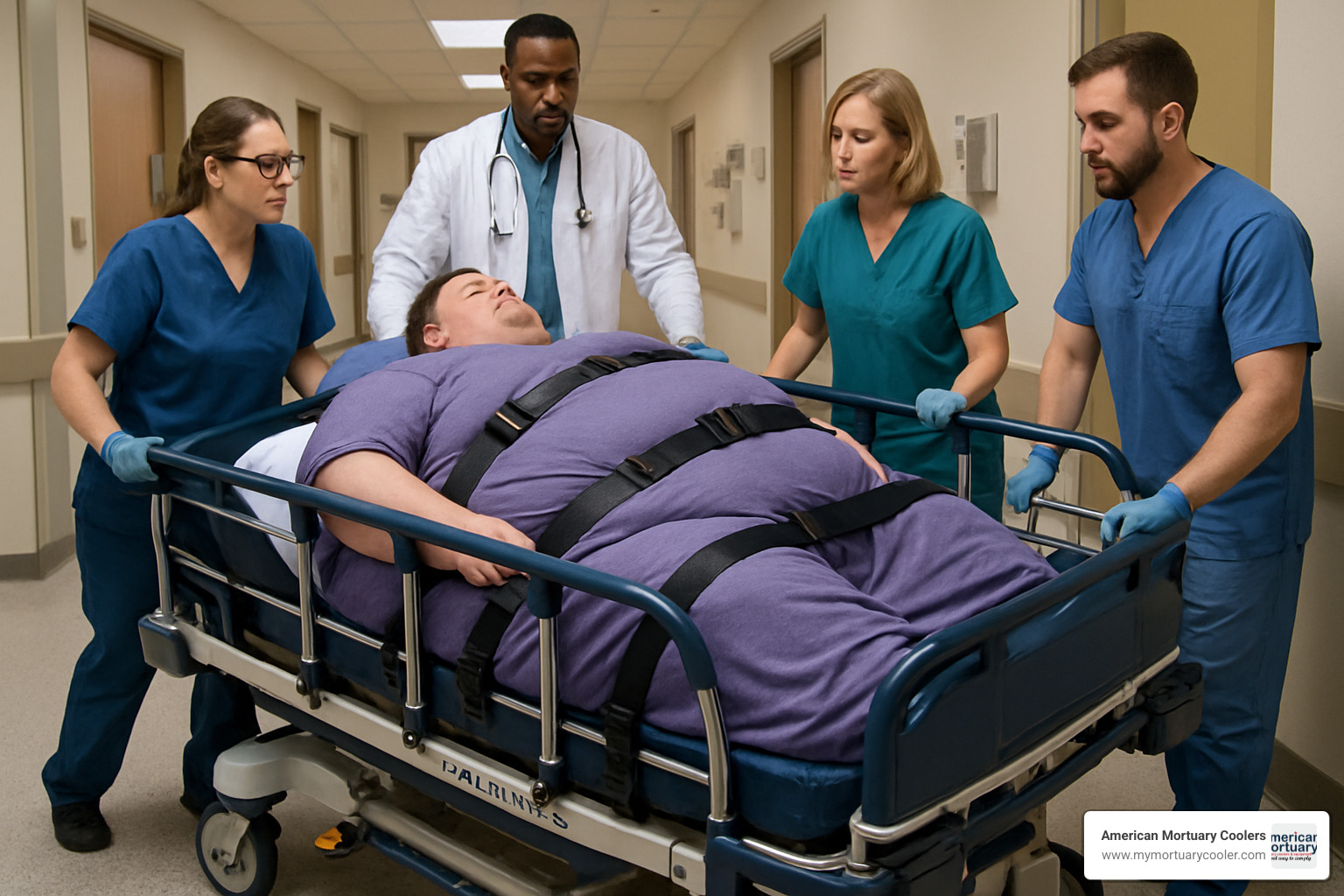
Standard Transport & Emergency Stretchers
The workhorses of any healthcare facility are the standard transport stretchers. These reliable platforms feature hydraulic frames that allow smooth height adjustments, making patient transfers safer for everyone involved. With 4-sided access, caregivers can easily reach patients from any angle—crucial during emergencies when every second counts.
Emergency and ambulance stretchers take durability up a notch. Built for the unpredictable environments of pre-hospital care, these units include robust safety straps and Trendelenburg positioning capabilities. When a patient goes into shock, the ability to quickly tilt the stretcher to lift the feet can be life-saving.
"In the ER, we need stretchers that can transform quickly," says one emergency department charge nurse. "One minute we're doing CPR, the next we're rushing to CT scan—our stretchers have to keep up with whatever the day brings."
Specialized Stretchers for Unique Patient Needs
Some patients require extra consideration, and manufacturers have developed impressive solutions to meet these challenges.
Bariatric stretchers stand out for their remarkable weight capacity—supporting patients up to 1,600 pounds. The Techlem bariatric model has earned trust in over 60 countries for its exceptional strength and durability. These units feature wider platforms and reinforced frames to ensure dignity and safety for larger patients.
For our smallest patients, pediatric crib stretchers provide secure transport with high rails and specialized padding that prevents movement during transport. Meanwhile, MRI-compatible stretchers solve a critical workflow problem by using non-magnetic materials that allow patients to move safely into imaging suites without transfers.
In trauma situations, scoop stretchers literally split vertically to slide under patients with suspected spinal injuries, minimizing dangerous movement. For emergency evacuations, ultra-narrow stair stretchers steer tight spaces when elevators aren't an option.
And yes, care extends beyond life—mortuary stretchers feature heavy-duty frames with multi-level loading capabilities designed specifically for funeral homes and morgue facilities.
More info about specialized options
Powered vs Manual Stretchers
The decision between powered and manual MEDICAL STRETCHERS affects both budget and staff wellbeing.
Manual stretchers have faithfully served healthcare for decades. They rely on hydraulic foot pumps or hand levers to adjust height—simple, reliable, and generally more affordable. However, they demand physical effort from caregivers, especially when moving heavier patients.
Battery-powered stretchers represent the evolution of patient transport technology. These models use electric systems for raising, lowering, and sometimes even loading into ambulances. The investment pays off in reduced staff injuries—particularly back strain, which plagues healthcare workers.

Research confirms what many healthcare workers already know from experience: powered stretchers can reduce musculoskeletal injuries among EMS workers by up to 50%. For busy departments or services with an aging workforce, this makes powered models worth considering despite the higher initial investment.
"We switched to powered stretchers last year," shares one ambulance service director. "The difference in how our team feels at the end of a 12-hour shift is night and day. Fewer complaints about back pain, more energy for actual patient care."
Key Features, Materials & Safety Standards to Look For
When you're shopping for MEDICAL STRETCHERS, it's not just about finding something with wheels. Think of it like buying a car – you need to look under the hood at what really matters.
The best MEDICAL STRETCHERS balance durability with thoughtful design. Weight capacity is crucial – standard models typically handle 350-750 pounds, while specialized bariatric versions can support up to a whopping 1,600 pounds. That's literally the weight of a small car!
"We always tell healthcare facilities to buy for their heaviest patients, not their average ones," says our equipment specialist at American Mortuary Coolers. "You never want to be in a situation where you can't safely transport someone."
Frame materials make a huge difference in daily use. Aluminum frames offer lightweight handling (great for staff with back issues), stainless steel provides exceptional durability (perfect for high-volume facilities), and carbon fiber delivers ultra-light performance at a premium price point (ideal for specialized transport).
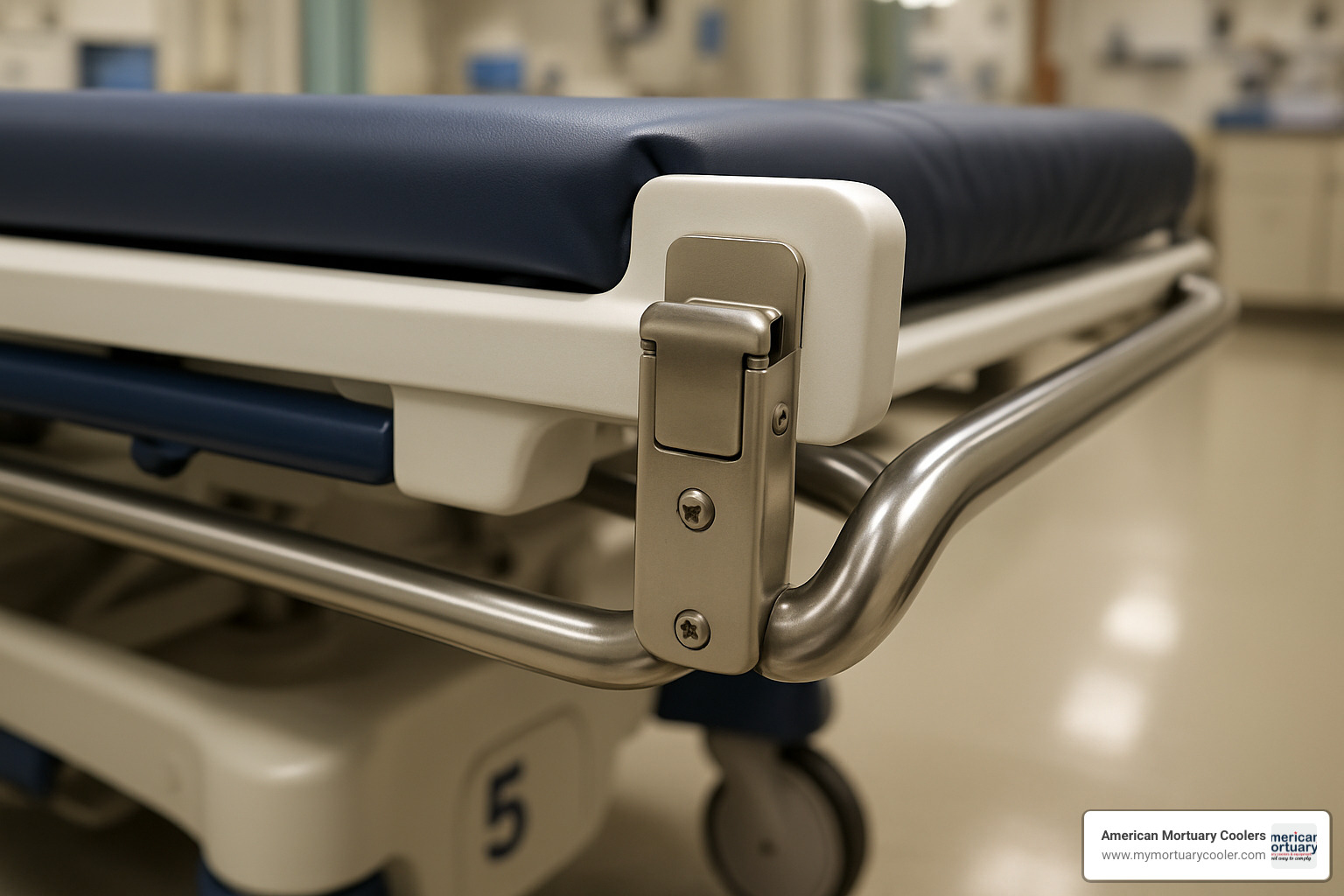
Construction & Materials That Last
Think of your MEDICAL STRETCHER as a workhorse that needs to perform day in and day out. The best models feature welded steel or aluminum frames that maintain structural integrity even after years of heavy use. Powder-coated finishes aren't just about looking professional – they resist corrosion from repeated cleaning and disinfection.
Many modern stretchers use polymer or composite decks instead of metal, making them lightweight, naturally radiolucent for imaging procedures, and incredibly easy to clean. The mattresses deserve special attention too – high-quality ones like those from Techlem are latex-free, double-insulated, and flame-retardant.
Speaking of longevity, well-made stretchers are surprisingly durable investments. Techlem models, for instance, are engineered for 20+ years of service life and routinely deliver over a decade of use with minimal maintenance costs. That's thousands of patient transports without breaking a sweat!
Essential Safety & Comfort Features
Safety features aren't optional extras – they're what protect patients during their most vulnerable moments. Five-point restraint systems prevent falls during rapid transport, while knee-gatch articulation provides crucial support for longer transports.
For patient comfort, look for shock-absorbing frames that minimize bumps during movement. It might seem like a small detail, but patients frequently mention this as something they notice and appreciate.
The best stretchers also include practical touches like multiple IV pole sockets and integrated oxygen tank holders – keeping vital equipment close at hand without creating clutter or safety hazards. For patients facing longer transports, pressure-relief mattresses can make a significant difference in preventing uncomfortable pressure points.
Regulatory & Compliance Checklist
Before finalizing any MEDICAL STRETCHER purchase, always verify these critical certifications:
- FDA Class I medical device registration for U.S. use
- CE marking for European and global markets
- ISO 13485 certification ensuring quality management standards
- IEC 60601-2-52 compliance for hospital bed safety
- Appropriate weight class/bariatric coding for your patient population
- Ambulance loading standard compatibility, especially for powered and mortuary models
"Regulatory compliance isn't the most exciting part of choosing equipment," admits our specialist, "but it's what protects you legally and ensures your patients get equipment that meets established safety standards."
For specialized settings like funeral homes, there are additional considerations regarding durability and loading capabilities. More info about compliance for funeral stretchers can help you steer these requirements with confidence.
Buying, Owning & Maintaining a Medical Stretcher
Investing in a medical stretcher isn't just a purchase—it's a commitment to patient safety and staff wellbeing that can span a decade or more. Think of it as adopting a workhorse that will carry your most vulnerable patients day in and day out.
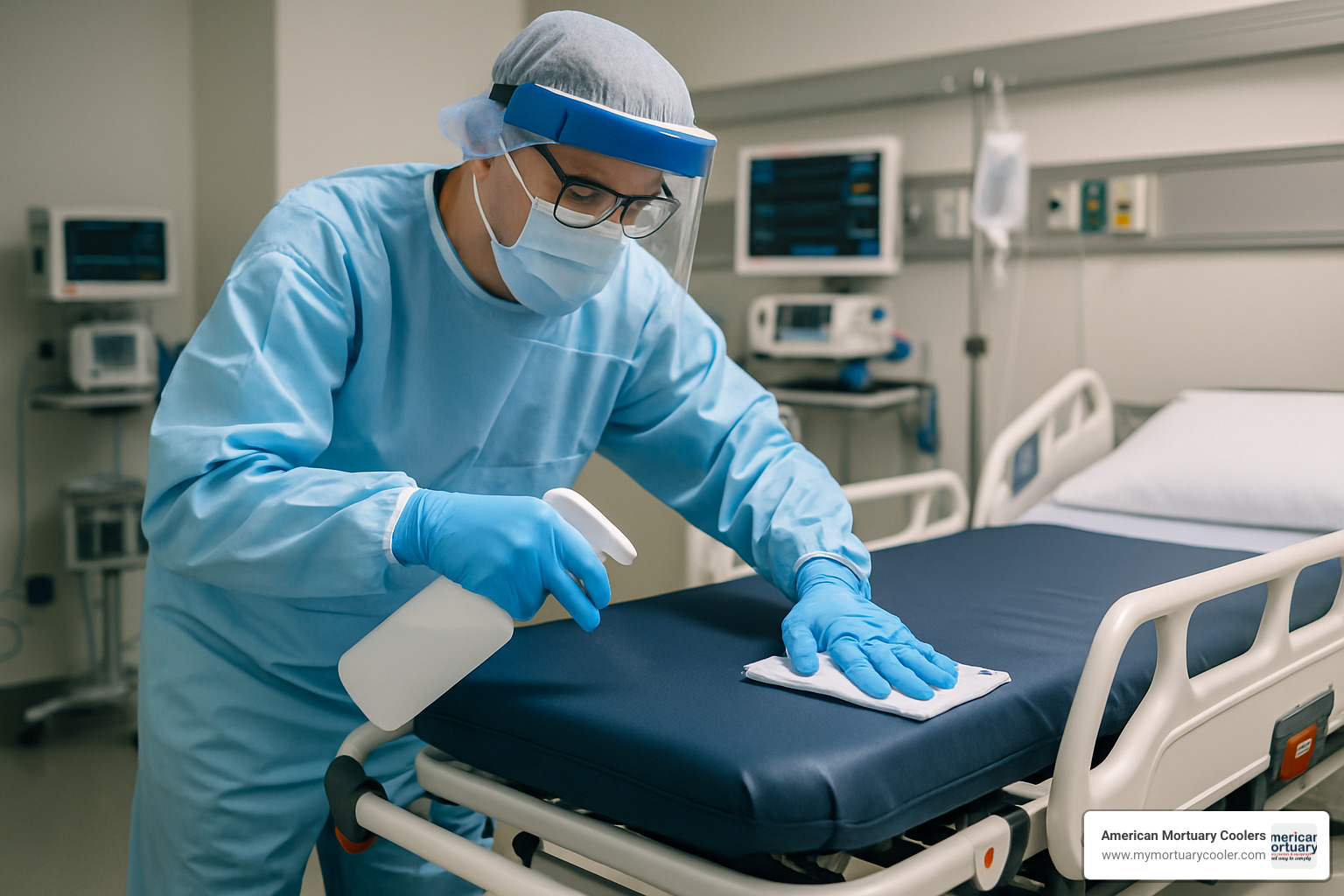
How to Select the Right Model
When our customers call about medical stretchers, the first question I always ask is: "Tell me about your patients." The answer shapes everything that follows.
Your patient population is the North Star of stretcher selection. A pediatric clinic has dramatically different needs than a bariatric surgery center. Consider not just your average patient, but your outliers too—that rare 600-pound patient might arrive exactly when your standard 500-pound capacity stretcher is in use.
Weight capacity options typically run from 350 pounds for standard models up to a robust 1,600 pounds for specialized bariatric units. Don't cut it close—always build in a safety margin.
The hallways and elevators of your facility determine what maneuverability features you'll need. Those tight corners in older buildings? They're begging for swivel casters and 4-sided steering. The Accu-Steer feature on premium models can be a godsend in cramped quarters.
Compatibility with your existing equipment saves headaches down the road. Will your IV poles fit the sockets? Can your oxygen tanks secure properly? Does the stretcher fit through your imaging suite doorways? A tape measure is your best friend during this phase.
Here at American Mortuary Coolers, we pride ourselves on responsive vendor support. With our network spanning the contiguous 48 states, we can typically deliver faster than the big medical supply houses—and with a personal touch that includes setup assistance and staff training.
Don't let financing be an afterthought. Many of our customers are surprised to learn we offer flexible payment plans and rental options that can make even premium medical stretchers accessible to smaller facilities.
New, Refurbished, or Rental?
"Should I buy new, refurbished, or rent?" It's the eternal question, and the answer usually comes down to budget and longevity.
New stretchers offer peace of mind with the latest safety features and full manufacturer warranties. You'll pay a premium, but for equipment that might serve you for 10+ years, spreading that cost over time often justifies the investment.
Refurbished models are the hidden gems of the stretcher world. A properly recertified unit can save you up to 50% off retail while still providing years of reliable service. We've seen EMS agencies outfit entire fleets with recertified stretchers, saving tens of thousands without compromising safety. Most come with solid warranties too—just ask about the recertification process.
Rental stretchers make perfect sense for temporary needs. Hosting a community health fair? Preparing for potential disaster response? Short-term rentals let you access quality equipment without the long-term commitment.
The PT1001 General Medical Stretcher with its 750-pound capacity and 22"–35" height range remains our bestseller for general hospital use. For emergency preparedness, basic pole stretchers start around $60 per unit—inexpensive insurance for mass casualty scenarios. At the high end, powered ambulance cots approaching $30,000 might seem extravagant until you calculate the cost of a single back injury claim from your staff.
Cleaning & Preventive Maintenance Best Practices
A well-maintained stretcher is like a well-maintained car—it lasts longer and performs better when you need it most.
Daily cleaning should be non-negotiable. We recommend neutral pH detergents or hospital-grade disinfectants that won't corrode metal components or degrade mattress materials. A quick wipe-down between patients and a thorough cleaning at shift change should be standard operating procedure.
After exposure to blood or body fluids, deep disinfection becomes necessary. Follow your facility's protocols, which should align with CDC guidelines. Disinfectants need proper contact time—usually several minutes—to effectively kill pathogens.
Those tiny casters and brakes bear the entire weight of the stretcher and patient, making them the most vulnerable components. Weekly checks for hair wrapped around wheels (a surprising common issue) and brake wear can prevent failures at critical moments.
For powered stretchers, battery maintenance is crucial. A dead battery during patient transport is more than inconvenient—it's potentially dangerous. Implement a charging schedule and test batteries regularly.
Maintain thorough documentation of all maintenance activities. These records not only satisfy compliance requirements but also help identify patterns of wear that might inform future purchasing decisions.
At American Mortuary Coolers, we've seen properly maintained medical stretchers serve faithfully for 15+ years—an impressive return on investment for equipment that literally carries your reputation along with your patients.
Innovations & Future Trends in Stretcher Technology
The future of medical stretchers isn't just about carrying patients—it's about creating smarter, safer, and more sustainable transport solutions that benefit everyone involved in patient care.
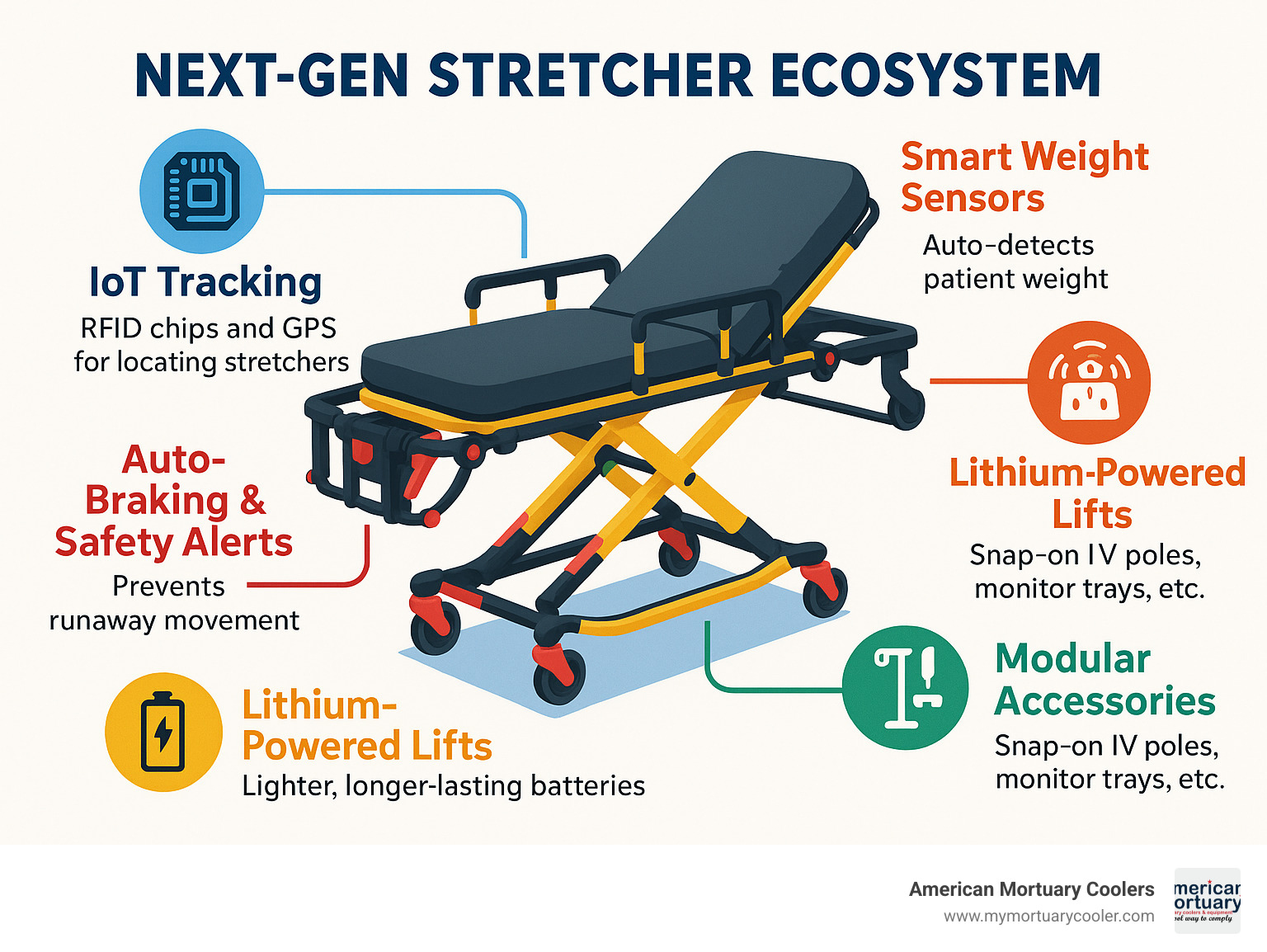
When I talk with hospital administrators about what's coming next in stretcher technology, their eyes light up at the possibilities. Today's innovations are solving real problems that healthcare providers face every day.
IoT tracking systems are changing how hospitals manage their equipment fleets. Imagine never again having to wander multiple floors searching for an available stretcher during a busy shift! With RFID chips and GPS technology, staff can locate any stretcher in the facility using a simple smartphone app. One hospital administrator told me they reduced equipment search time by 70% after implementing this technology.
Patient and caregiver safety is driving many innovations. Smart weight sensors now automatically detect patient weight, ensuring proper lifting protocols and providing accurate data for medication dosing. Meanwhile, auto-braking technology is preventing "runaway stretcher" incidents—a common cause of staff injuries and patient falls. These brakes engage automatically when the stretcher is unattended, providing peace of mind in hectic emergency situations.
The power systems in modern stretchers have come a long way too. Lithium-powered lift systems are replacing older battery technologies, offering lighter weight, faster charging, and significantly longer service life. This means fewer interruptions during critical patient transports and lower maintenance costs over time.
Flexibility matters in today's diverse healthcare environments, which is why modular accessory systems are gaining popularity. Rather than purchasing multiple specialized stretchers, facilities can now adapt standard models with snap-on components like IV poles, monitor trays, tablet mounts, and specialized padding—all without tools or complicated installation.
There's also growing emphasis on sustainability in stretcher design. Eco-friendly materials including recycled polymers and responsibly-sourced components are becoming standard features. Manufacturers like Techlem are designing for 20+ year service lives, dramatically reducing waste and environmental impact compared to earlier models that might be replaced every 5-7 years.
Patient transfers—often the riskiest part of transport—are becoming safer with zero-clearance side rails that allow for seamless lateral transfers without dangerous gaps between surfaces. This technology is especially valuable in radiology departments where patients frequently move between stretchers and imaging platforms.
Want to see some of these innovations in action? Check out this Techlem Medical Stretchers reel that showcases several cutting-edge design features.
At American Mortuary Coolers, we're excited about these developments because they directly benefit our customers in the funeral industry too. The technology crossover between medical and mortuary transport equipment means better solutions for everyone involved in patient and decedent care. We're particularly focused on incorporating improved lifting systems and sustainable materials into our specialized transport solutions.
The stretcher of tomorrow won't just be a platform with wheels—it will be an intelligent, connected part of the healthcare ecosystem that actively contributes to better outcomes for patients and caregivers alike.
Frequently Asked Questions about Medical Stretchers
What weight capacity should I choose?
When it comes to weight capacity, it's always better to have more than you need. I recommend selecting a medical stretcher that comfortably exceeds your heaviest anticipated patient weight—and don't forget to account for any attached equipment like monitors or IV poles.
For most hospital settings, stretchers with 500-750 lb capacity work perfectly fine. I've found that these models handle about 95% of all patient transport situations without breaking a sweat. However, if you serve a community with higher obesity rates or run a bariatric program, you'll want to consider specialty models that support 1,000+ pounds.
For our funeral home clients, we often recommend our heavy-duty mortuary stretchers that can handle up to 1,600 pounds. As one funeral director told me, "You never want to be in a situation where your equipment isn't up to the task—especially when families are present."
How do powered stretchers improve caregiver safety?
Your staff's backs will thank you for investing in powered stretchers! These models use battery-assisted systems for lifting and loading, dramatically reducing the physical strain on your team.
The science backs this up too—studies consistently show up to a 50% reduction in back and musculoskeletal injuries when facilities switch from manual to powered models. One EMS director I worked with reported that their worker's compensation claims dropped by over 60% in the year after upgrading their fleet.
Think about it: a typical patient transfer might involve lifting 200+ pounds multiple times per shift. That adds up to tons of weight over a career. Powered stretchers essentially eliminate that strain by doing the heavy lifting for you.
What is the average lifespan and maintenance cost?
Quality medical stretchers are built to last. The premium models we carry, like those from Techlem, are engineered for 20+ years of service. Most of our customers report getting over 10 years of use with minimal maintenance costs—which makes the initial investment much easier to justify.
Regular cleaning and proper training are your best friends for extending stretcher lifespan. Simple habits like keeping debris out of the wheels, checking brake mechanisms monthly, and promptly addressing any hydraulic issues can add years to your equipment.
For budget-conscious facilities, we also offer refurbished models that deliver similar reliability at about half the price of new units. One hospital administrator told me, "We saved nearly $40,000 by going with certified refurbished stretchers for our ER expansion, and they've performed flawlessly."
When it comes to medical stretchers, the cheapest option rarely offers the best value over time. Think of it as an investment in both patient safety and staff wellbeing—two things you never want to compromise on.
Conclusion
Selecting the perfect medical stretcher is far more than a checkbox on your equipment list—it's a genuine commitment to the safety of your patients, the wellbeing of your caregivers, and the smooth operation of your facility.
When you choose the right stretcher, you're investing in peace of mind. You're ensuring that your team can safely transport patients without risking back injuries. You're providing comfort for vulnerable individuals during what might be their most difficult moments. And you're making a decision that will serve your facility for years to come.
At American Mortuary Coolers, we understand these needs intimately. We don't just sell equipment—we provide solutions that make a real difference in how you care for people. Our stretchers are built with the perfect balance of durability and thoughtful design, whether you're in a busy emergency department or a dignified funeral home setting.
"The right equipment shouldn't just work—it should work for you," as one of our long-time customers puts it. That's why we offer custom solutions that adapt to your specific requirements, not the other way around.
Our nationwide delivery network reaches all 48 contiguous states, bringing our expertise right to your doorstep. And we're always just a phone call away when you need advice on selecting the perfect model for your unique situation.
Want to dive deeper into medical transport equipment? We've created comprehensive resources just for you:
- A Quick Start Guide to the Best Medical Stretchers
- Medical Stretcher vs. Mortuary Stretcher: Understanding the Heavy Duty Differences
- Detailed Guide to MOBI Medical Supply Equipment
Thank you for considering American Mortuary Coolers for your medical stretcher needs. We're proud to be part of your mission to provide safe, dignified care—because we believe that reliable transportation is the foundation of excellent patient handling.
